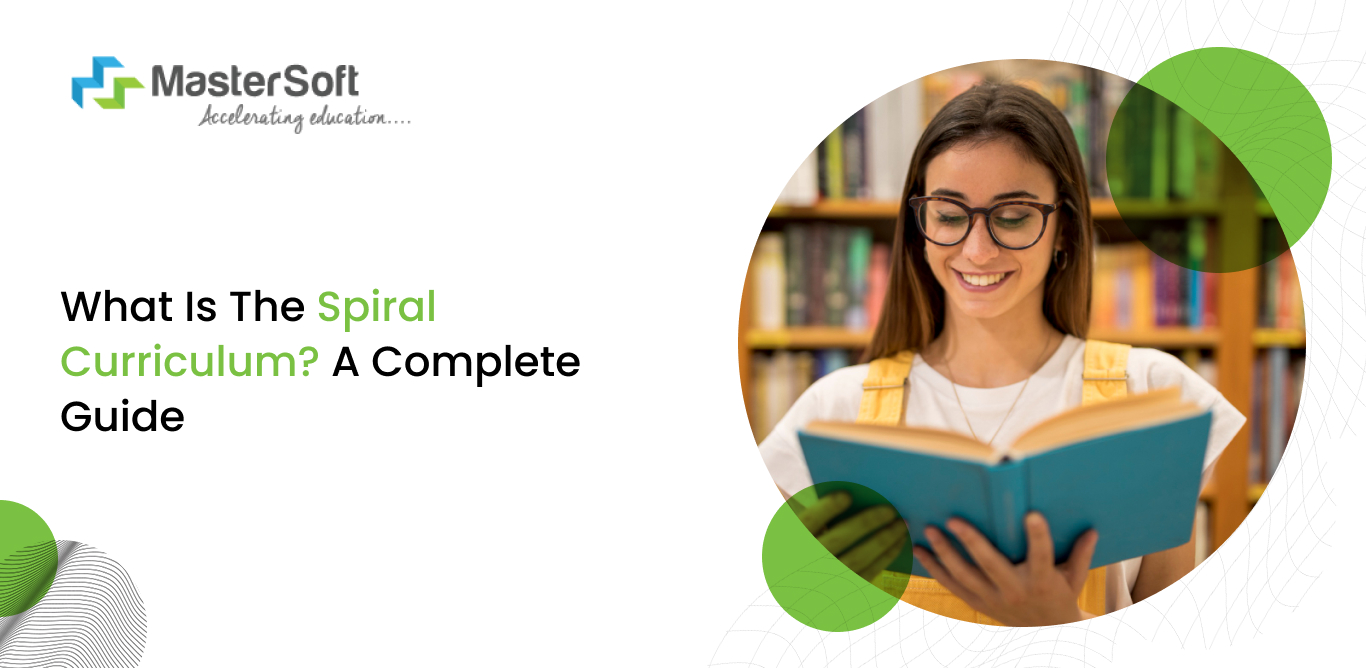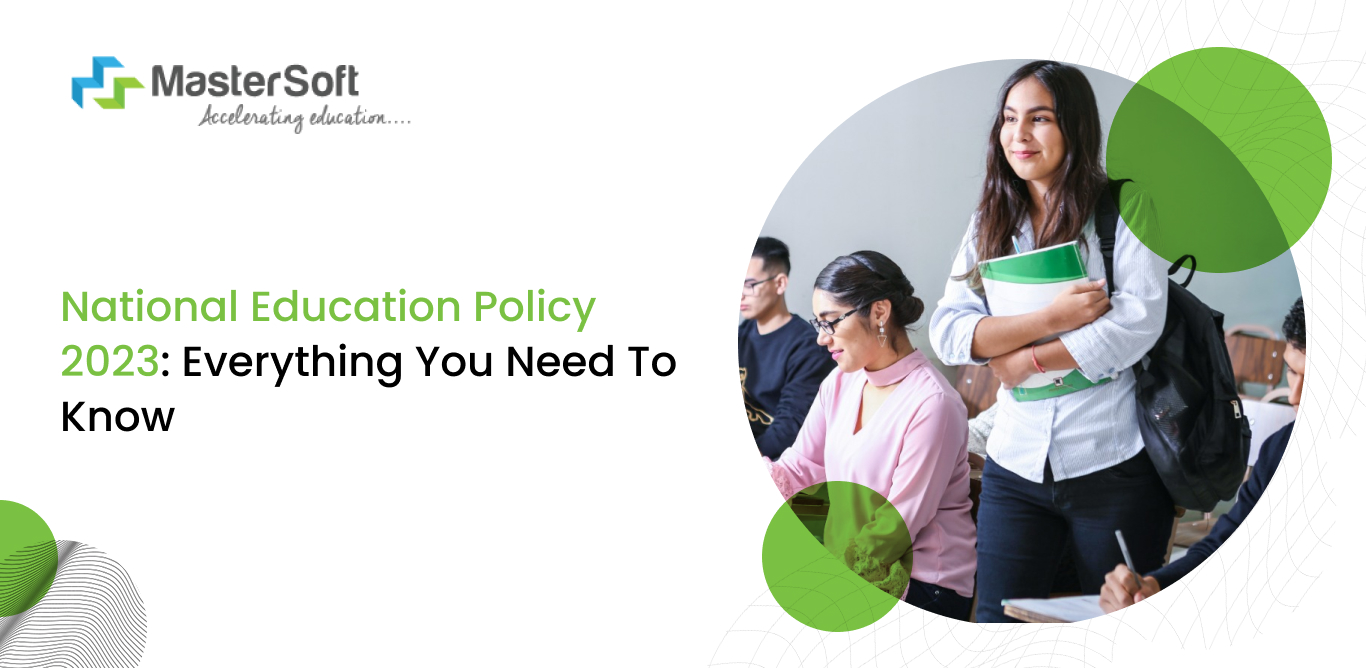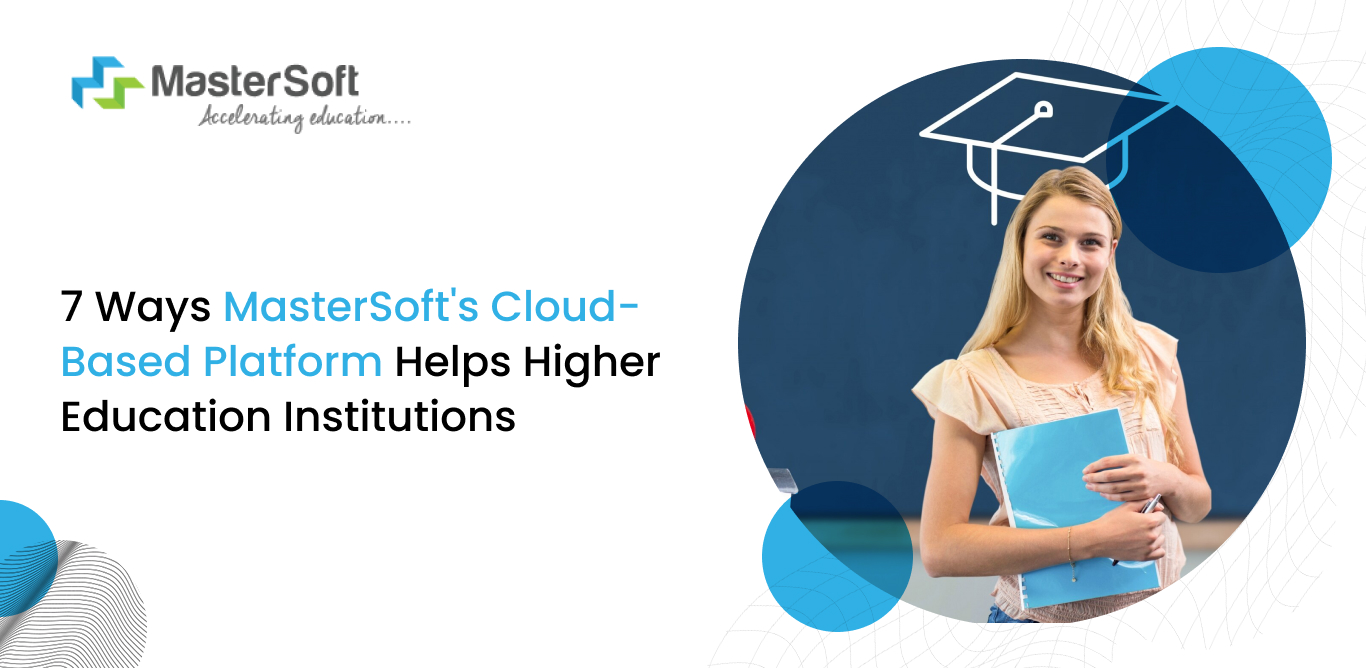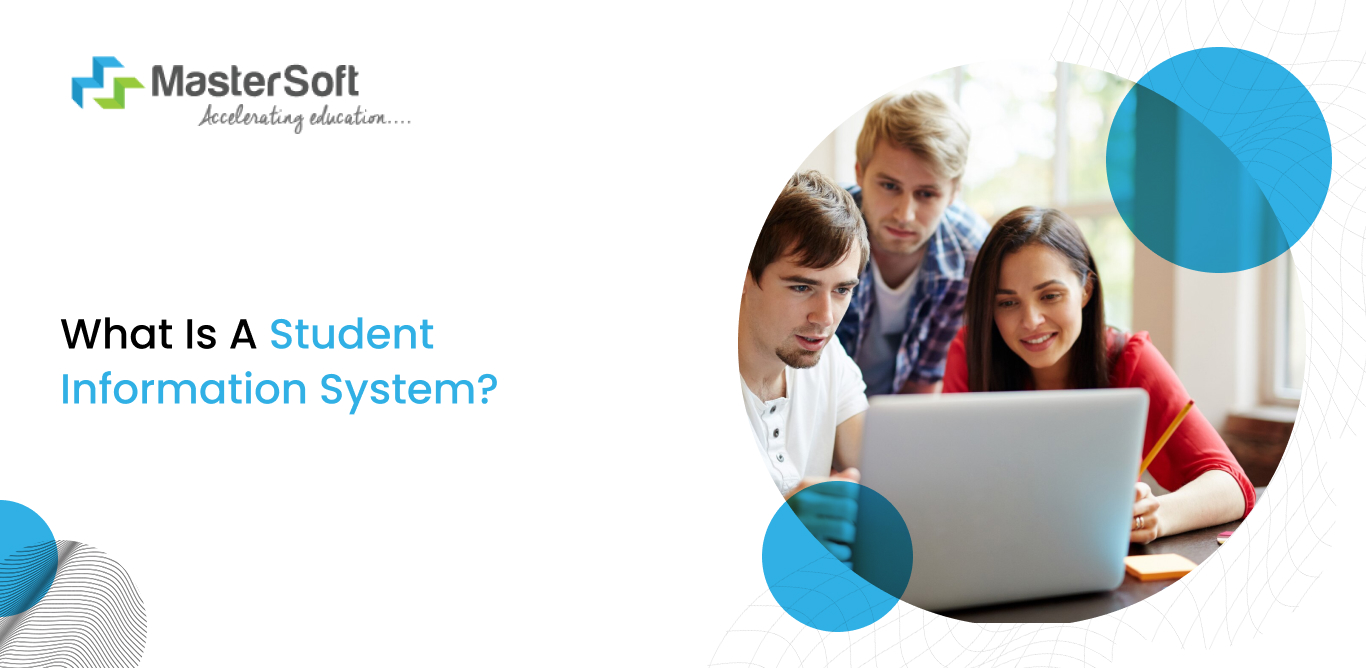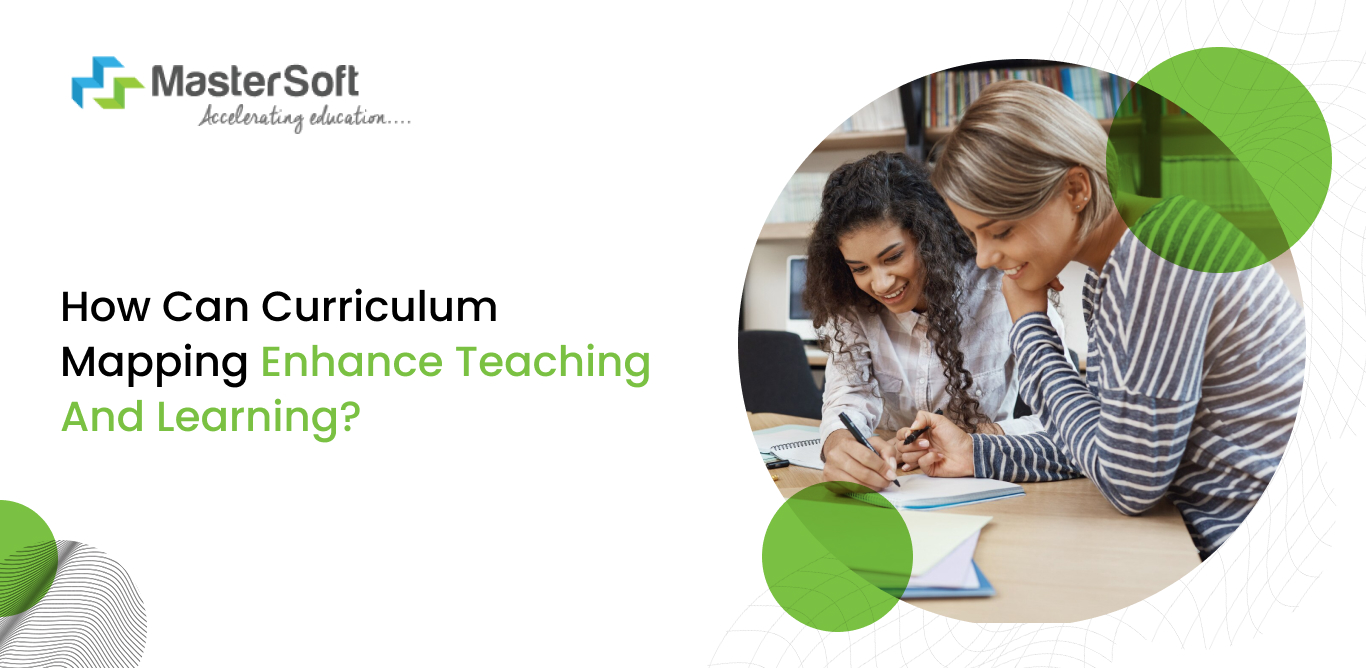11, June 2024
Be it a mathematical equation or scientific theory, learning them can be hard, especially because they are complex concepts. No wonder students often resort to rote learning or memorization because they fail to understand.
Is there a solution? There sure is one thing that relates to moving beyond old and ineffective techniques and employing strategic ones.
On top of that, teachers are responsible for imparting high-quality education that helps students learn core skills and knowledge. However, rote memorization and one-dimensional instructional approaches are the biggest drawbacks. That is why the spiral curriculum is the perfect method that improves learning habits and help accomplish learning objectives.
What is the Spiral Curriculum?
The spiral curriculum is an innovative curriculum model that provides a framework of themes, topics, or subjects. It relates to the spiralling technique, according to which students learn the basic or fundamental facts of the subject.
Furthermore, the teacher introduces more details as the learning progresses, which relate to the basics that they learned in the beginning. Also, they reemphasize the fundamentals routinely so that students retain them in long-term memory.
A significant aspect of the spiral progression approach is to introduce the learners to several concepts, skills, knowledge, and topics. The curriculum has been designed in such a way that teachers repeat the key concepts with increasing levels of complexity.
In simple words, teachers facilitate learning through an upward spiral technique wherein students revisit key concepts and topics. It is a particularly effective technique that helps students gain deeper knowledge and understanding over time.
Transform Digital Education With Higher Education ERP System
Origin of the Spiral Curriculum
Jerome Bruner, a renowned American psychologist and education theorist, proposed and developed the spiral curriculum. He discussed the unique curriculum in his 1960s publication, ‘’The Process of Learning’’.
He presented a hypothesis that indicated teachers can teach any subject effectively to any child at any stage of development. He gave references to Jean Piaget’s work and research, who was a constructivist theorist.
Bruner referred to a specific idea of Piaget, indicating that children move through four different stages of cognitive development.
What are the primary principles of the spiral curriculum?
The structure of the spiral curriculum has three primary principles that complement the approach accordingly. The principles are as follows:
- Cyclical: Students should revisit the same topic throughout the academic year.
- Increasing Depth: The level of complexity or difficulty will increase every time the student revisits the topic. It will help them gain a deeper understanding.
- Prior Knowledge: Teachers must enable the students to use their previous knowledge when they revisit the same topics or concepts. It will help them connect foundational and further learning and avoid starting from the beginning.
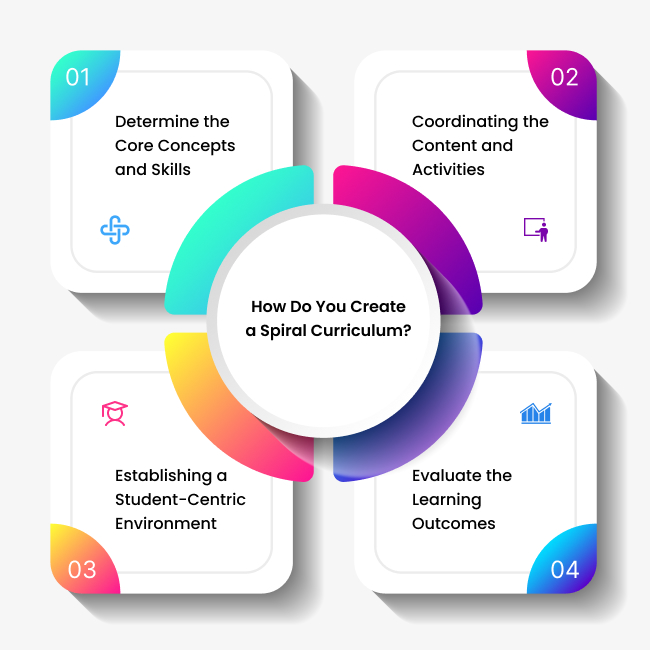
1. Determine the Core Concepts and Skills
The first and foremost step in creating a spiral curriculum is to identify the core concepts and skills that the learners will attain by the course's end. Moreover, these are learning outcomes and objectives that are central to the curriculum framework and design.
Teachers and institutes can collaborate and use multiple sources like standards, competencies, and industry expertise and trends to identify outcomes. Consequently, it will help to figure out the in-demand and fundamental skills.
Simultaneously, it is equally important for educators to assess the prior knowledge, interests, and learning requirements of the students. They must also check the relevance and applicability of the outcomes in relation to the student's goals.
When the learning outcomes and their applicability are in sync, it helps students have a goal-oriented and meaningful learning experience.
2. Coordinating the Content and Activities
The second step is a crucial one, wherein teachers will plan and coordinate the content and activities to teach and facilitate the core skills and concepts. For instance, in the first and second grades, they can employ simple and basic techniques of addition and subtraction.
Subsequently, when students learn to do the numbers orally, they will not need to count their fingers or use number lines. Therefore, it calls for teachers to use easy methods to help them establish the basics.
At the same time, they must select and sequence the materials, topics, resources, and tasks, helping students progress from basic to advanced understanding levels. Hence, integrating content activities across different units and modules is useful in ensuring a coherent whole.
This is where teachers can use curriculum maps and outlines to streamline the process and keep track of the content and activities.
3. Establishing a Student-Centric Environment
A curriculum that does little or nothing to elevate a student's educational experience is inept and inconsequential. Therefore, the spiral curriculum is one of the finest examples of student-centric curriculums that improve student's competencies.
Hence, it urges teachers and institutes to provide appropriate support and guidance to students. Therefore, it calls for teachers to employ the necessary strategies, assisting students to recall their prior knowledge.
At the same time, students connect new information with their existing thinking style and apply it to different situations. Furthermore, the teacher’s role in this context is significant, as they must personalise the learning process as per the student’s level and pace.
Hence, they must utilise different methods such as question-and-answer sessions, real-time feedback, and peer collaboration. Besides, they can use learning tools like the learning management system to conduct personalised assessments.
How Learning Management Software Reshapes Education?
4. Evaluate the Learning Outcomes
The final step is evaluating the learning outcomes by measuring and determining how well the students have accomplished the core concepts and skills. Teachers must plan and implement assessments that suit the academic and grade levels.
These assessments will enable students to revisit the core concepts and assess the depth of learners’ understanding and performance. It is also a crucial method of gauging their growth and mastery of skills over time.
In addition, teachers must leverage the assessment results to develop and improve instructional methods. In fact, they must adapt and adjust the curriculum and provide real-time feedback after assessing it carefully.
They can use various types of assessments to track and measure the learning outcomes, such as summative, formative, and authentic assessments.
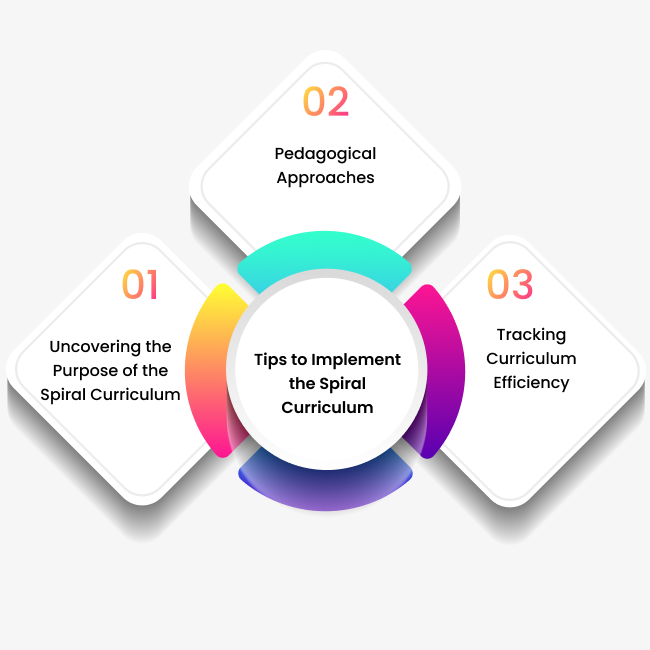
Tips to Implement the Spiral Curriculum
If someone asks what spiral curriculum is, the perfect answer will be that it is an instructional approach that allows students to learn in a spiral progression. However, implementing them in the classroom can be challenging without a proper strategy, such as the following:
1. Uncovering the Purpose of the Spiral Curriculum
Is there a need to shift to a new curriculum? What is wrong with the old curriculum? Addressing these questions is important to identify the reasons and determine the appropriateness of the spiral curriculum.
Besides, implementing the curriculum requires a significant amount of time and effort; hence, teachers and institutes need to move forward accordingly.
2. Pedagogical Approaches
It is notable to point out that the spiral curriculum is ideal for the 5+3+3+4 system because it provides a stage-wise span of time for knowledge acquisition. For instance, in the first five formative years, teachers can introduce the core concepts, enabling learners to get a firm grasp on them.
Moreover, students will move in an ascending learning structure, wherein they will master skills and knowledge while revisiting the foundation topics. Nevertheless, it is vital to select and implement pedagogical approaches that align with the curriculum.
For instance, teachers can conduct interventions such as formative assessments to assess students’ learning needs. Furthermore, it will enable them to assess students’ understanding of complex concepts.
3. Tracking Curriculum Efficiency
A vital part of implementing a curriculum is tracking the outcomes and ensuring whether it continues to align with them or not. Using learning tools and conducting end-of-lesson tests are great ways to assess curriculum efficiency.
On the other hand, collecting feedback, peer reviews, focus groups, and individual interviews are equally useful.
Bottom Line,
A spiral curriculum is an effective teaching model and curriculum framework that teachers can utilise to establish a spiral learning progression. Also, it enables students to strengthen core skills and knowledge while building upon new ones.
Additionally, teachers must employ well-planned pedagogical methods and evaluation mechanisms to implement the curriculum.
Simplify your faculty hiring process with MasterSoft’s faculty management system.
Mobile: 08448010216
Email: janki.somani@iitms.co.in

